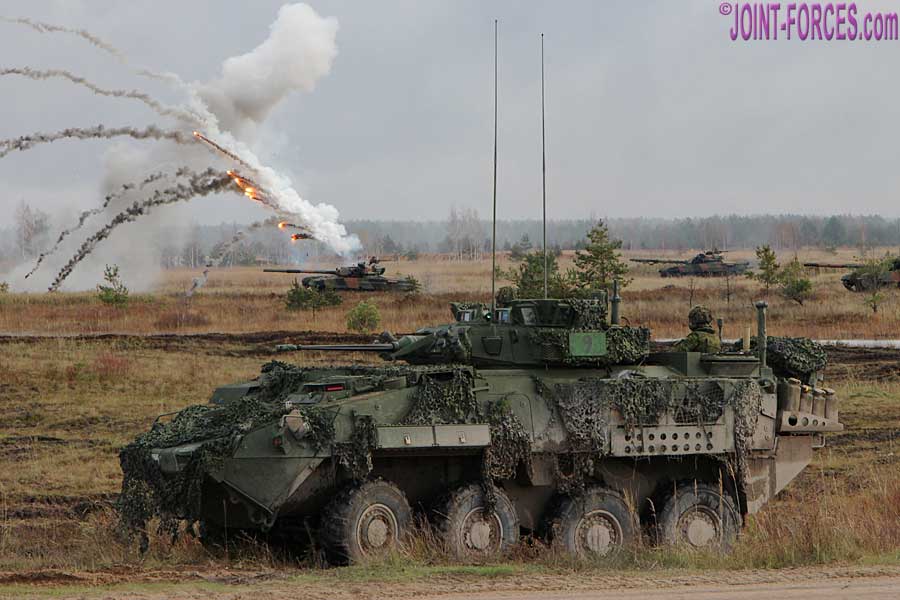
Since 2017 NATO has increased its Forward Presence in Eastern and Southeastern Europe as part of a strengthened deterrence posture.
~
NATO Forward Presence Factsheet:-
An important component of NATO’s deterrence and defence posture is its military presence in the eastern part of Alliance territory. In recent years, Allies have enhanced NATO’s forward presence by establishing multinational battlegroups in Bulgaria, Estonia, Hungary, Latvia, Lithuania, Poland, Romania and Slovakia. They have also sent more ships, planes and troops to NATO’s eastern flank, from the Baltic Sea in the north to the Black Sea in the south. These actions demonstrate Allies’ resolve and readiness to defend Alliance territory and populations.
NATO’s military presence in the eastern part of the Alliance is a key part of its strengthened deterrence and defence posture, which has been enhanced in recent years to reflect the new security reality in the Euro-Atlantic area. Russia’s illegal and illegitimate annexation of Crimea in 2014 and full-scale invasion of Ukraine in 2022 have fundamentally changed the security environment in Europe, and NATO has responded by significantly strengthening its readiness to protect and defend all Allies. The forward presence of Allied forces is defensive, proportionate, transparent and in line with the Alliance’s international commitments and obligations. It represents a significant commitment by Allies and is a tangible reminder that an attack on one NATO Ally is an attack on all.

NATO’s forward presence comprises eight multinational battlegroups, provided by framework nations and other contributing Allies on a voluntary, fully sustainable and rotational basis. The battlegroups operate in concert with national home defence forces and are present at all times in the host countries. All eight battlegroups are fully combat-capable formations. The battlegroups are not identical; their sizes and compositions are tailored to specific geographic factors and threats. Overall, military requirements guide each battlegroup’s composition.
Today, troops and personnel from NATO Allies serve, train and exercise together in the east of the Alliance, representing a strong expression of unity and solidarity. Forces from contributing nations rotate in and out of the battlegroups; at any given time, they may be deployed to the battlegroups or stationed in their home countries with the ability to deploy rapidly, if needed.
As of December 2023, the eight battlegroups were composed of the following Allies:
- Host nation: Bulgaria
- Framework nation: Italy
- Contributing nations: Albania, Greece, Montenegro, North Macedonia, Türkiye and the United States
- Host nation: Estonia
- Framework nation: United Kingdom
- Contributing nations: France and Iceland
- Host nation: Hungary
- Framework nation: Hungary
- Contributing nations: Croatia, Italy, Türkiye and the United States
- Host nation: Latvia
- Framework nation: Canada
- Contributing nations: Albania, Czechia, Iceland, Italy, Montenegro, North Macedonia, Poland, Slovakia, Slovenia and Spain
- Host nation: Lithuania
- Framework nation: Germany
- Contributing nations: Belgium, Czechia, Luxembourg, the Netherlands, Norway and the United States
- Host nation: Poland
- Framework nation: United States
- Contributing nations: Croatia, Romania and the United Kingdom

- Host nation: Romania
- Framework nation: France
- Contributing nations: Belgium, Luxembourg, North Macedonia, Poland, Portugal and the United States

- Host nation: Slovakia
- Framework nation: Czechia
- Contributing nations: Germany and Slovenia
All eight battlegroups are integrated into NATO’s command structure to ensure the necessary readiness and responsiveness.
The four north-eastern battlegroups (in Estonia, Latvia, Lithuania and Poland) are under NATO command through the Multinational Corps Northeast Headquarters in Szczecin, Poland. Two division-level headquarters coordinate training and preparation activities of their respective battlegroups. Multinational Division Northeast Headquarters located in Elbląg, Poland has been fully operational since December 2018. This headquarters works closely with the battlegroups in Poland and Lithuania. A complementary Multinational Division North Headquarters was activated by NATO in October 2020 and is moving towards full operational capability. Its forward elements are located in Ādaži, Latvia, while the rest of the headquarters is located in Karup, Denmark. This headquarters cooperates closely with the battlegroups in Estonia and Latvia.

Regionally focused headquarters – such as Multinational Division Centre Headquarters in Székesfehérvár, Hungary and Multinational Division Southeast Headquarters in Bucharest, Romania – contribute to the operation of the four south-eastern battlegroups (in Bulgaria, Hungary, Romania and Slovakia).
In addition, many activities undertaken by Allies nationally – while not formally part of NATO’s forward presence – also contribute to increased Allied activity in the eastern part of the Alliance.
~

























